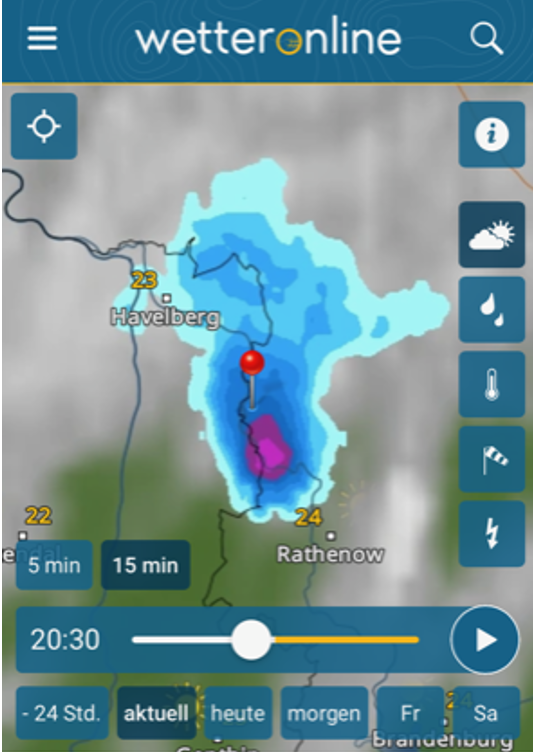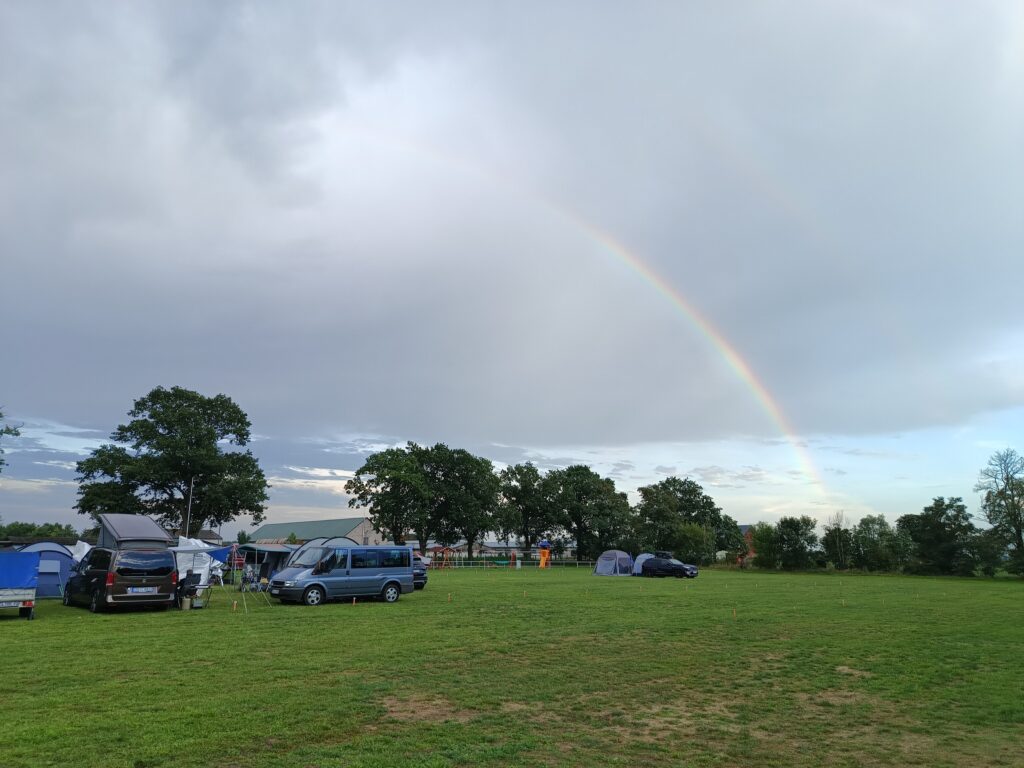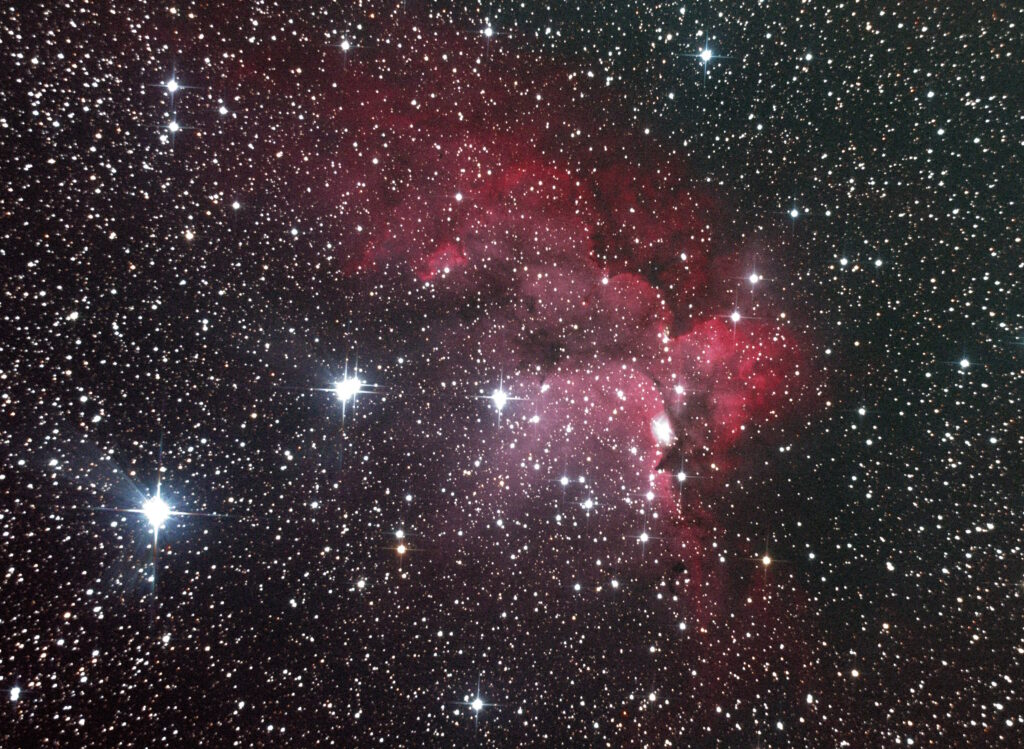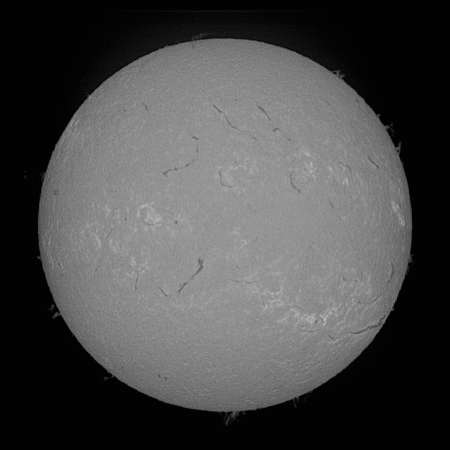Anyone who thinks astronomy takes place outside in the cold night does not know Gülpe in the Westhavelland. Every year, the WHAT – Westhavelländer Astro Treffen takes place there. Gülpe is located in one of the darkest areas of Germany. This year the WHAT took place from 18 to 20.08.2023. We had even arrived on 14.08. and stayed until 21.08. You live on an old sports field in a tent or caravan – if you want to call misused vans that. We had it all: rain, sun and even morning fog, but always at high/very high temperatures. It was just summer. Although there were many clouds during the night and also rain, but fortunately also two almost completely clear nights.


The rain clouds apparently had us clearly in focus,
although we were still lucky on the observation meadow – in surrounding communities, windstorms and squalls caused considerable damage.
In the morning, the humidity was significantly "increased" before the sun gained the upper hand again during the day – greenhouse atmosphere guaranteed!


The days passed with preparations for the night. Since we had mainly planned photographic shots, the technical equipment was correspondingly extensive. As always in practical application, problems arise here and there that were not expected when preparing for the trip. For example, we initially had connection difficulties with the WLAN, which we wanted to use to establish wireless connections to our telescopes. The reason turned out to be the large number of Wi-Fi transmitters on the sports field. So everything was converted to a wired connection.
In the first of the two clear nights, Gerold had strong dew formation as the main obstacle due to the proximity to the Havel. The camera, which was supposed to take non-tracking continuous shots of the sky in order to obtain so-called star trails, was fogged up after only half an hour. The lens heater hadn't worked because the battery had discharged unexpectedly quickly. That's why there were only short star trails.

Specifications: Canon 6D, 14 mm focal length, 18×60 s exposure, Startrails software
The deep sky object of that night was supposed to be the Wizard Nebula. For this purpose, a fundamentally different technical structure was used with a reflector. Here, too, dew became noticeable in the secondary mirror after about 1.5 hours, which caused unacceptable blurring in the photos. The recording cycle had to be cancelled. To solve the problem, a heating of the secondary mirror is planned and a large dew shield.

Specifications: Newtonian telescope 250/1200, LRGB Antlia filter, camera QHY268M – gain 20, offset 20, chip temperature -6°C, L 42×60s, RGB 14×60s each
For the second clear night – unfortunately also the last – the Cirrus Nebula in the constellation Swan should be the destination. The dew was not a problem here, because a refractor with a heated lens was used. But the bug devil didn't let up. The autoguiding just didn't want to connect to the mount. It was exposed for about an hour without autoguiding, but the result was unfortunately not acceptable. Small consolation: Two nights later in Osnabrück everything went smoothly! See also "The Cirrus Nebula in the Swan constellation" on this page.
Achim had the triangular galaxy on his agenda with his 130 APO. But here, too, the Wi-Fi connection had considerable problems due to the many different networks of all the WHAT participants. Switching to LAN cables for remote control also did not bring the optimal solution, because the autoguiding (PHD 2) also communicates with the mount (Skywatcher AZ-EQ6 GT ) via a wireless connection. The older version of the AZ EQ6 does not yet have a USB interface, so the Wi-Fi adapter is actually a good idea here – unless a lot of people have the same idea in the same place. As a result, the autoguiding camera regularly cut the connection – many individual shots had to be "disposed of" as a result.

Due to the many connections drops of autoguiding, there were double exposures and the dreaded Easter egg stars in many pictures. Nevertheless, an image of the triangular galaxy was compiled from the meager, usable remainder. For the fact that almost every technique caused problems at first that night, one can be quite satisfied with the result.

Technische Daten: Teleskop APO 910mm f/7, LRGB-Antlia-Filter, Kamera QHY268M – Gain 50, Offset 30, Chiptemperatur -6,5° C, L 21x120s, RB je 6x120s G7x120s
Thomas was on his way in spectroscopy.


During the day, he photographed the sun in different wavelengths with the DIY-built spectroheliograph SolEx.



During the night, the constellation Lyra was spectroscoped. Of the five stars Vega, ZET01 Lyrae, DEL02 Lyrae, Gamma Lyrae and Beta Lyrae, spectra were obtained with the spectrograph Alpy600. In addition, the planetary nebula M57 was spectroscoped.

A report on the spectroheliography and the spectra of the constellations will be published shortly in the section:Spectroscopy.
All in all, the WHAT 2023 was a successful experience despite the rain, the many thunderstorms, the sweltering heat during the day and the few hours of clear night skies. We were able to exchange ideas with other astro enthusiasts, learn from the technical problems and, like our astronomical colleague Werner Wöhrmann, visibly enjoyed astronomy

– what more could you ask for?